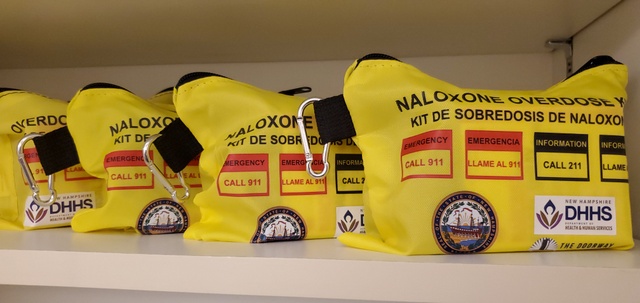“Tranq,” “Philly dope,” “sleep cut,” or “zombie drug;” what did your patient just tell you they took?
Xylazine, an animal tranquilizer not approved for humans, is emerging as an adulterant in several drugs of abuse, most notably illicitly obtained opioids.
Chemically, xylazine acts as a potent α2-adrenergic agonist, resembling tricyclic antidepressants and clonidine. This stimulation decreases norepinephrine’s and dopamine’s release in the central nervous system causing analgesia, muscle relaxation, and sedation.
Synthesized in 1960 by Bayer, in the last several decades xylazine has been increasingly used as a bulking agent in fentanyl, heroin, and “speedballs” – a mixture of heroin or morphine plus cocaine or methamphetamine. Making its earliest documented debut in human use in Puerto Rico in the early 2010s, xylazine has complicated the treatment of suspected drug intoxication. [6]
Prevalence has been increasing in mainland USA. The Philadelphia Medical Examiner’s Office quotes a rapid increase in cases of fatal heroin and/or fentanyl overdose with xylazine from 2% between 2010 and 2015 to 31% in 2019. [3]
In 2022, Vermont showed the presence of xylazine in 30% of fatal opioid overdoses. [5] Providers in Maine, Massachusetts, Connecticut, Maryland and New York are also seeing xylazine exacerbate the opioid crisis, with the western US likely to be affected soon as well. [3]
There is some evidence that indicates that xylazine and fentanyl potentiate the sedative nature of both substances. [7] Classically, xylazine co-ingestion is suspected in patients who present with an opioid toxidrome but remain bradycardic, hypotensive and with respiratory depression even after multiple doses of Narcan have been administered.
Since xylazine is not an opioid, Narcan does not reverse the sedative effects making overdose more complicated and potentially lethal to users. Xylazine can produce toxicity and fatality in humans in doses ranging from 40 to 2,400 mg and has a half-life ranging from 23 to 50 minutes, creating a challenge for overdose management. [8, 2] In rats, xylazine was also found to impede the anticonvulsant properties of multiple medications including diazepam, phenobarbital, and phenytoin, which has implications for efforts to control withdrawal seizures. [1]
Xylazine-associated wounds are one of the more notable complications and the exact mechanism of skin injury is not well understood. Vastly ulcerated and necrotic, the wounds are often more striking than the “krokodil” eschars seen in the 2010’s.
Additionally, people may continue to inject xylazine-containing substances directly into their skin lesions for pain relief, as the α2 effects decrease the perception of pain centrally. [7] Wounds are often deep, necrotic lesions and are difficult to manage, which complicates treatment for those with drug use disorders, since recovery facilities do not have the resources to provide adequate wound care and therefore do not accept patients with these extensive lesions.
The FDA does not currently have any approved medications or antidotes for the treatment of xylazine intoxication or guidelines for withdrawal management, although they did issue a clinician alert in November 2022 about the increasing prevalence. [10]
Case studies have documented a variety of approaches to intoxication and overdose which include naloxone for concurrent opioid overdose, supportive measures including intubation and mechanical ventilation, and monitoring magnesium and sodium levels.
Some medications have been cited to manage xylazine withdrawal such as dexmedetomidine, clonidine, tizanidine and even phenobarbital. [4] Several case reports have cited using atropine to reverse progressive bradycardia and hypotension. [1] Managing xylazine-associated skin ulcers includes extensive debridement, sulfadiazine creams, antibacterial ointments, and in severe cases, skin grafting or amputation.[9]
Exacerbating the already challenging opioid crisis, xylazine should be considered as a possible co-ingestant in those with substance use disorders not responding to high dose Narcan or in acute withdrawal unresponsive to standard therapies. For your next patient on their fifth round of Narcan, look smart for all your toxicology friends and save a life by thinking about a concomitant xylazine overdose.
References
- Ayub S, Parnia S, Poddar K, Bachu AK, Sullivan A, Khan AM, Ahmed S, Jain L. Xylazine in the Opioid Epidemic: A Systematic Review of Case Reports and Clinical Implications. Cureus. 2023 Mar 29;15(3):e36864. doi: 10.7759/cureus.36864. PMID: 37009344; PMCID: PMC10063250.
- FDA warns about the risk of xylazine exposure in humans. [Mar; 2023]. https://www.fda.gov/media/162981/download
- Johnson, Jewell, et al. “Increasing presence of xylazine in heroin and/or fentanyl deaths, Philadelphia, Pennsylvania, 2010–2019.” Injury prevention 27.4 (2021): 395-398.
- Ehrman-Dupre, Rachel, et al. “Management of xylazine withdrawal in a hospitalized patient: A case report.” Journal of Addiction Medicine 16.5 (2010): 595-598.
- Monthly opioid morbidity and mortality report. Vermont Department of Health. https://www.healthvermont.gov/sites/default/files/documents/pdf/ADAP-MonthlyOpioidRelatedFatalOverdoses.pdf Vermont Department of Health. 2023:8.
- Reyes, J.C., Negrón, J.L., Colón, H.M. et al.The Emerging of Xylazine as a New Drug of Abuse and its Health Consequences among Drug Users in Puerto Rico. J Urban Health 89, 519–526 (2012). https://doi.org/10.1007/s11524-011-9662-6
- Ruiz-Colón K, Chavez-Arias C, Díaz-Alcalá JE , et al. Xylazine intoxication in humans and its importance as an emerging adulterant in abused drugs: a comprehensive review of the literature. Forensic Sci Int 2014;240:18.doi:10.1016/j.forsciint.2014.03.015 pmid:http://www.ncbi.nlm.nih.gov/pubmed/24769343
- Silva-Torres, Luz, et al. “Xylazine as a drug of abuse and its effects on the generation of reactive species and DNA damage on human umbilical vein endothelial cells.”Journal of Toxicology2014 (2014).
- Malayala, Srikrishna V., et al. “Xylazine-induced skin ulcers in a person who injects drugs in Philadelphia, Pennsylvania, USA.”Cureus14.8 (2022).
- US Food and Drug Administration. “FDA alerts health care professionals of risks to patients exposed to xylazine in illicit drugs.” November 8, 2022. Online. https://www.fda.gov/drugs/drug-safety-and-availability/fda-alerts-health-care-professionals-risks-patients-exposed-xylazine-illicit-drugs




1 Comment
Came across this article while researching substance abuse in Sullivan County for my work in Claremont as a clinical intern at West Central Behavioral Health. Thank you for a stronger understanding of what substances are present in this area, I had not realized how pervasive and wide a range of addictive substances all of us are up against. Thank you for this article, very informative.